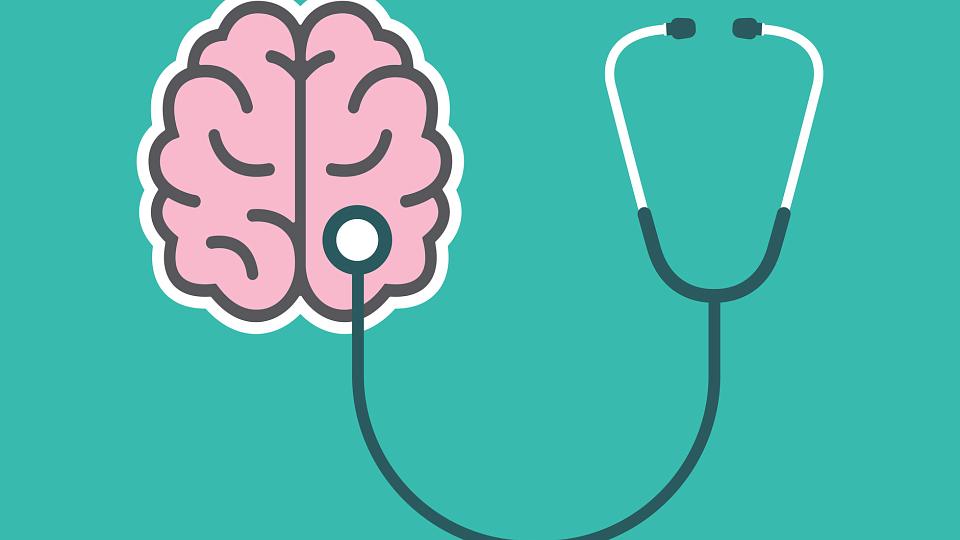
Interviewer: For a patient who has experienced any sort of traumatic brain injury, recovery can be something that might seem a little scary. How long is it going to last? What can you expect, etc.?
So to answer some of these questions, we are here with Dr. John Speed. He is a professor in the division of Physical Medicine and Rehabilitation and practices at the University of Utah Health. Now, Dr. Speed, when we talk about a traumatic brain injury, that's a pretty big term. What kind of patients are we talking about here?
Dr. Speed: We're talking about a huge spectrum of people, from an individual that may have sustained a concussion heading a soccer ball all the way to someone that's been in a catastrophic car accident and sustained a brain injury that's left them in a coma for a prolonged period of time.
Interviewer: And what kind of patients do you see the most getting these types of injuries?
Dr. Speed: Well, the most common type of brain injury really is the concussion or mild brain injury that might be seen in the emergency room and sent home. But here at the Craig H. Neilsen Rehabilitation Hospital, we take care of patients in the hospital that have sustained more severe injuries that are perhaps comatose or have much more significant problems that last for a longer period of time.
Interviewer: So someone comes into say the hospital, the emergency room, this particular center with a brain injury, what's the first things that you guys are going to do to, you know, make sure that they're okay?
Dr. Speed: Well, that piece of it really falls to my neurosurgical and emergency room colleagues. They'll do any necessary surgical intervention to, say, remove a blood clot that may have formed. Possibly they'll do a procedure to remove a piece of skull to allow for brain swelling, which can be incredibly frightening for family members because obviously it looks very awful. But then once the person has recovered from a neurosurgical standpoint and they're ready for rehabilitation, they'll transfer over to the Craig H. Neilsen Rehabilitation Hospital and they'll have inpatient rehabilitation here working on all of the problems that they may have as a result of their brain injury.
Interviewer: And what are some of the problems that a patient like this might be experiencing?
Dr. Speed: Well, the brain is awfully complex and it does everything. So it could be emotional problems. It could be cognitive problems. It could be paralysis of one or both sides of the body, swallowing problems, speech problems, visual difficulties, you name it.
Interviewer: So when we talk about emotional or cognitive, what kind of things are we experiencing? Like a change in mood and behavior, lack of memory, what are some of those things?
Dr. Speed: Well, early on a person may still be in what we call post-traumatic amnesia. They have no idea where they are. They have no idea what's going on. They can't process information. They can't make sense of their environment. And I make the analogy that it's somewhat like living inside a kaleidoscope. They're just presented with all of the sensory input that they can't make any sense of. And so, of course, that's a very frightening experience, and oftentimes the reaction is one of thrashing around, being agitated, yelling, screaming, because it's a very frightening and disorienting experience. But as a person continues to recover, that orientation improves and the person can make sense of their environment again and that agitation will eventually settle down.
Interviewer: That sounds like a kind of situation that could cause some anxiety for both a patient and for, say, the loved ones that are looking on. What can, you know, doctors like you or someone at a center like the Craig H. Neilsen Center do to help relieve these kinds of symptoms and get the person, you know, closer to normal?
Dr. Speed: Well, the first thing we do is have the person in a low stimulation environment because the less sensory input coming in, the low light, low sound, the TV is off, blinds are down, etc., and minimize the stimulation. And then if necessary, we may use a person's music that they're familiar with, that they enjoy. That can be calming for lots of people. And interestingly, I had patient years ago, who was a young man who was into head banging heavy metal and that was something that was very calming for him. It was very disturbing for the staff, but it worked to help him feel more comfortable and relaxed.
Interviewer: So after a patient has gone through that post-traumatic amnesia, what are some of the steps that come next, and how long can a patient and their loved ones be expecting the recovery to take?
Dr. Speed: Well, of course, the recovery is incredibly variable, and it depends on the severity of the injury, it depends on the type of injury or injuries, and it also depends to some extent on what the person had in terms of life experience prior to the injury. But once the typical sort of sequence of events is the person will proceed out of post-traumatic amnesia. So they'll be oriented, they'll know where they are, they'll know what year it is, and so forth. They'll know that they're in the hospital and why they're in the hospital.
And our therapists are excellent at working with people to regain physical function, balance coordination, mobility. Our occupational therapists will work on what are called activities of daily living. How does a person get dressed? How do they bathe themselves? And those sound pretty basic, but, you know, if a person has had a brain injury, they may not be able to dress themselves. They may put their pants on and then put the underpants on outside because they just don't know the sequence of events that are necessary and they can't process that. So occupational therapists will work on those kinds of things. And then we also have speech therapists that will work on cognition, memory, and also address any language problems that might exist and also any swallowing difficulties that might result from the brain injury.
Interviewer: So what are the expected outcomes for the types of treatment regardless of what kind of brain injury this individual is having and comes to a center like the Craig H. Neilsen Rehab Center?
Dr. Speed: Well, outcomes, of course, are incredibly variable, but we're very proud of the outcomes that we do achieve here. And more than 80% of the people that we admit to the Craig H. Neilsen Rehab Hospital with brain injury are discharged to home. And that doesn't mean the rehab therapies are finished at that time, but people do go home and continue their therapies in some fashion after discharge to home.
Interviewer: And how long are they typically at a center like the Neilsen Center?
Dr. Speed: Well, our typical length of stay for someone with a brain injury that's admitted here is somewhere between two and three weeks.
Interviewer: Wow. So I guess one of the messages maybe that, you know, with the right help and the right medical assistance, there is hope for someone after a traumatic brain injury.
Dr. Speed: Oh, absolutely. For sure.
Craig H. Neilsen Rehabilitation Hospital
Our hospital was built for patients—of all capabilities—to interact with their surroundings in real-time. Our smart technology enables patients greater control of the space around them and their recovery. Come experience it for yourself.

Can You Experience Traumatic Brain Injury Symptoms Years Later?
You suffered a brain injury from a bump, blow, or jolt to the head earlier in your life. Years later, you experience one or many symptoms like foggy thinking or memory loss? Derrick Allred, MD, discusses if a concussion could be the cause.






